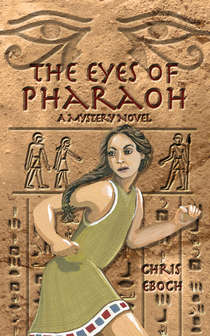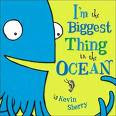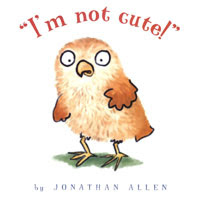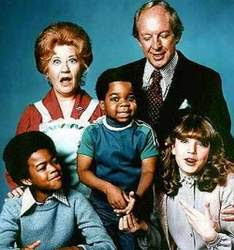new posts in all blogs
Viewing: Blog Posts Tagged with: bock, Most Recent at Top [Help]
Results 1 - 8 of 8
How to use this Page
You are viewing the most recent posts tagged with the words: bock in the JacketFlap blog reader. What is a tag? Think of a tag as a keyword or category label. Tags can both help you find posts on JacketFlap.com as well as provide an easy way for you to "remember" and classify posts for later recall. Try adding a tag yourself by clicking "Add a tag" below a post's header. Scroll down through the list of Recent Posts in the left column and click on a post title that sounds interesting. You can view all posts from a specific blog by clicking the Blog name in the right column, or you can click a 'More Posts from this Blog' link in any individual post.

By:
Darcy Pattison,
on 2/29/2012
Blog:
Darcy Pattison's Revision Notes
(
Login to Add to MyJacketFlap)
JacketFlap tags:
publishing,
historical fiction,
bock,
self,
chris,
indie,
niche,
how to publish a book,
kris,
Alternate Publishing,
eboch,
Add a tag
Continuing the series about Alternate Publishing. This is part 3 of 7.
Dodging Trends: Why I Turned to Self-Publishing
Guest Post by Chris Eboch
“If a book is good enough, it will find a home.” I’ve heard that a lot in the publishing industry, especially from editors and agents.
There’s just one problem. It’s not true.
After 15 years in this business, 12 traditionally published books, and years as a teacher through the Institute of Children’s Literature, writing organizations, and local colleges, I think I’m a pretty good judge of quality. And yet I’ve seen too many great manuscripts fail to sell. Maybe some authors just need to keep trying, but when multiple published authors say, “I can’t believe her novel hasn’t sold yet,” you have to acknowledge that the publishing business judges by standards other than quality.
That’s not to say you can sell a terrible book. Rather, a manuscript has to be great AND trendy, or at least something editors and marketing departments predict will sell enough copies to make money for the company. When vampires were selling big, publishers released more vampire books.
 I happen to like historical fiction. My first middle grade novel, The Well of Sacrifice (Clarion Books), came out in 1999. It’s an adventure set in ninth-century Mayan Guatemala, and because many schools teach the Maya in fourth grade, it’s still in print and I get a nice royalty check twice a year.
I happen to like historical fiction. My first middle grade novel, The Well of Sacrifice (Clarion Books), came out in 1999. It’s an adventure set in ninth-century Mayan Guatemala, and because many schools teach the Maya in fourth grade, it’s still in print and I get a nice royalty check twice a year.
 A few years ago, I wrote a mystery set in ancient Egypt. The Eyes of Pharaoh is better written than The Well of Sacrifice, since I’ve become a better writer. Yet wherever I sent it, I got one of two responses – “Historical fiction isn’t selling well these days” or “We already have an Egypt book.”
A few years ago, I wrote a mystery set in ancient Egypt. The Eyes of Pharaoh is better written than The Well of Sacrifice, since I’ve become a better writer. Yet wherever I sent it, I got one of two responses – “Historical fiction isn’t selling well these days” or “We already have an Egypt book.”
I do know writers who have sold historical fiction more recently—mainly literary novels set in America in the last 200 years. And a couple of young adult novels have touched on ancient Egypt (well, at least on Cleopatra, who isn’t all that ancient by Egyptian standards). But despite great feedback on my story, despite teachers telling me they wanted the book for their classroom, despite the l

By: Lauren,
on 11/5/2010
Blog:
OUPblog
(
Login to Add to MyJacketFlap)
JacketFlap tags:
Music,
Biography,
Current Events,
Theater,
Featured,
broadway,
bock,
composer,
fiddler on the roof,
musical theater,
jerry bock,
philip lambert,
sheldon harnick,
harnick,
fiorello!,
Rodgers and Hammerstein,
she loves me,
fiddler,
Add a tag
Earlier this week, Jerry Bock (perhaps best known for Fiddler on the Roof) passed away, the day after he was honored with Lifetime Achievement Award from the Dramatists Guild. Below, Philip Lambert remembers the great composer.
By Philip Lambert
When Jerry Bock died on November 2, three weeks shy of his eighty-second birthday, the American musical theater lost one of its most expressive, gifted composers. With lyricist Sheldon Harnick, Bock wrote the scores for three of the most celebrated musicals Broadway history,
Fiorello! (1959),
She Loves Me (1963), and
Fiddler on the Roof (1964), and for four other excellent shows during a fourteen-year partnership (
The Body Beautiful, 1958;
Tenderloin, 1960;
The Apple Tree, 1966;
The Rothschilds, 1970). His work stands as a testament to the value of musical craftsmanship, dramatic sensitivity, and artistic generosity on the Broadway stage.
After an apprenticeship in early television, and at Camp Tamiment, a summer camp for adults, in the early 1950s, Bock made his Broadway debut with three songs in a revue, Catch a Star! (1955). At that time he wrote mostly with Larry Holofcener, whom he had met at the University of Wisconsin. Bock and Holofcener also teamed with George David Weiss to create a star vehicle for Sammy Davis, Jr., Mr. Wonderful in 1956. But when Bock began working with Sheldon Harnick in 1957 – they were introduced by a mutual friend, Jack Cassidy – his music began truly to blossom and sparkle. Bock and Harnick wrote hundreds of songs of infinite variety in support of disparate stories and characters. Feeding off each other’s formidable talents, the partnership thrived until an array of forces sent them their separate ways in the early 1970s. After that Bock mostly wrote his own lyrics for other new shows, including a very successful series of musicals for young audiences between 2000 and 2007, and music for a feature film (Sidney Lumet’s A Stranger Among Us, 1992). He also worked on personal, private songwriting projects during the last four decades, yielding autobiographical song cycles (Album Leaves, Trading Places) and thematic collections (Noblesse O’ Blues, Three/Four All).
Jerry Bock was the master of what Lehman Engel called the “musical costume.” He could dress up a song in any style, from the nineteenth-century parlor song (for Tenderloin) to the jazz shouter (in The Apple Tree). He would immerse himself in the style and culture of the story he was helping to tell and then transport the audience there with musical references and flavorings. In She Loves Me he took us to Hungary, in The Rothschilds to the power centers of eighteenth-century Europe. In his most successful show, Fiddler on the Roof, he drew from his own background and heritage to evoke a turn-of-the-century Russian shtetl. Of that experience, he said in 2008, “I simply could not stop the brood of melodies and harmonies that waited to be born.”
There was, in other words, no single Jerry Bock “style.” His style was simply an acute sensitivity to the dramatic requirements of the project at hand. He and Harnick would work tirelessly on each of their scores searching for perfect dramatic support, during development, rehearsals, and pre-Broadway tours, usually producing two or three times the number of songs a

By: Lauren,
on 10/29/2010
Blog:
OUPblog
(
Login to Add to MyJacketFlap)
JacketFlap tags:
composer,
fiddler on the roof,
musical theater,
tony awards,
dramatists guild,
jerry bock,
joseph stein,
lifetime achievement awards,
philip lambert,
sheldon harnick,
harnick,
Theater,
Featured,
bock,
Add a tag
By Philip Lambert
They never had the marquee allure of Rodgers and Hammerstein. They didn’t enjoy the longevity of their contemporaries Kander and Ebb, who wrote songs for shows like Cabaret and Chicago for almost forty-two years. But they are one of Broadway’s most critically acclaimed and commercially successful songwriting teams, and on November 1, 2010, composer Jerry Bock and lyricist Sheldon Harnick will be honored with Lifetime Achievement Awards from the Dramatists Guild, at a ceremony in New York.
It may be difficult for Bock and Harnick to find room for the new statuettes on their mantels, which are already crowded with Tony Awards (for Fiorello! in 1960 and Fiddler on the Roof in 1965), a Pulitzer Prize (Fiorello!), New York Drama Critics’ Circle Awards (Fiorello! and Fiddler), and a Grammy (She Loves Me, 1963), among other honors. But the new award has the extra appeal of recognizing all of their work, not only the prize-winners but also their other Broadway shows – The Body Beautiful (1958), Tenderloin (1960), The Apple Tree (1966), and The Rothschilds (1970) – as well as the shows they wrote with other partners before they met in 1956 (such as Bock’s score for Sammy Davis, Jr.’s Broadway debut, Mr. Wonderful, in 1956), and the work they have done since they went their separate ways in 1970 (including Harnick’s lyrical contributions to Richard Rodgers’s penultimate musical, Rex, in 1976). They have taken their rightful places in the Broadway pantheon.
What were the secrets of their success? Indeed, what are the requirements for any successful songwriting team? Personal compatibility is a plus, of course, but not essential, as Gilbert and Sullivan proved. It’s a matter of debate whether George and Ira Gershwin wrote great songs together because of, or in spite of, their familial bond. And then there are the examples of Irving Berlin, Cole Porter, and Stephen Sondheim, avoiding the issue entirely by writing both music and lyrics. But Bock and Harnick were, and still are, close friends. Their personalities complement each other, from opposite ends of a dispositional spectrum. As Harnick, the self-described pessimist, said in 1971, “Between us, we help bring the other either down to earth, or up to earth.” And it surely helped that each partner was well-schooled in the task of the other. Bock has always had a flair for verse and has served as his own lyricist on many occasions (including a very successful series of musicals for young audiences in 2000–07). Harnick is a classically trained violinist who has written both music and lyrics at various times throughout his career (for instance, the early revue numbers “Boston Beguine” [1952] and “Merry Little Minuet” [1953], and the more recent full-scale musical Dragons [1973–2006], for which he wrote book, music, and lyrics).
Most importantly, and most elusively, Bock and Harnick mastered the art of collaboration, of being productive members of complex creative teams. Working with book writers such as Joseph Stein and Joe Masteroff, and with directors such as Jerome Robbins, Harold Prince, George Abbott, and Mike Nichols, they learned to listen, to adapt, to evolve. They became experts in reading and shaping audience reactions, in knowing where and how music can enhance drama. They learned that a song is only as good as its dramatic context, that their best efforts in the studio might fall short on the stage and need to be replaced by something entirely new. They have estimated that they wrote two or three songs for every one that eventua
Bird & Bee Designs was formed by
artist Amy Bock (a.k.a. Bird) and designer Daniel Bresnihan (a.k.a. Bee) with the desire to create distinctive and light-hearted greeting cards.
A petite company located in Naugatuck, Connecticut, Bird & Bee greeting cards are printed and packaged in the U.S. with a concern for the environment, using soy-based inks and the finest quality domestic papers.
I was sorry to hear that Frank Wilson, longtime editor of the Philadelphia Inquirer’s book coverage, has left the paper.
Frank was a lovely guy, a sharp dresser with a courtly manner and a wry sense of humor who presided with equanimity over all manner of upheaval and dismantlement, cutbacks and buyouts, and personnel changes at the paper (once upon a time, the Inquirer had a freestanding book section. Those were the days…).
I had the pleasure of writing the occasional book review for him when I was a reporter at the Inquirer. As a novelist, I was lucky enough to be the recipient of his generosity toward Philadelphia authors, who could depend on the Inky for regular, rigorous reviews.
Under Frank’s leadership, the Inquirer covered a broad range of books, from mysteries and memoir to poetry and YA. The paper would weigh in on the big books, but never seemed to suffer under the notion that if they didn’t review the latest by Philip Roth or Michael Chabon at the exact same moment, and in precisely the same way, as the rest of the critical establishment, they’d be taken outside and beaten.
Frank was generous to authors, but even more so to book bloggers, many of whom found their first in-print home on the Inquirer’s pages. That’s notable, given how many editors persist in peering down from their crumbling perches and dumping boiling oil on the barbarians at the gates.
I hope he’ll enjoy great success at whatever he turns his talents to next…and I look forward to keeping up with his adventures on his blog.
In other news, along with everyone else in lit-land, I’m enjoying the orgy of coverage – and the subsequent orgy of analysis of the orgy of coverage – that Charles Bock is receiving.
Bock, and his debut novel BEAUTIFUL CHILDREN, have been the subject of much attention from the New York Times – a breathless profile, a Valentine on the front of page of the NYT Book Review, followed by a much-less-impressed review in the daily paper – all of which has bitter, envious writers (which is to say, all of us) spinning ever-wilder conspiracy theories (his editor’s wife’s cousin once co-wrote a proposal for a cookbook with the Times’ editor’s first wife, and that’s why he’s getting so much press!)
I’m not convinced there’s a conspiracy here. Bock is the same writer the Times always falls for. Sometimes his name is Jonathan, and sometimes his name is Benjamin, or Gary, but he’s basically the same guy: white, male East Coast wunderkind poised to write the Next Big Book.
In fact, Bock sounds like a composite of the Times’ previous boycrushes: there’s a whiff of James Frey’s tattooed bad-assery leavened with Jonathan Safran Foer’s disarming boyishness; a bit of Jonathan Franzen’s relationship-wrecking obsessiveness, tempered by the Tom Perrotta-style revelation of a semi-shameful ghostwriting gig (Perrotta did R.L. Stine; Bock ghost-wrote Shaquille O’Neal’s autobiography).
However, there’s a difference between Bock and the paper’s other loves: namely, early evidence of greatness.
With Frey and Franzen, you had the big boast, backed up by big advances, film and foreign sales, and bookseller’s excitement (and, eventually, the Oprah endorsement). With Safran Foer and Perrotta, you had the glowing reviews, book-to-film adaptations, and strong sales of earlier work.
Bock’s advance was relatively modest, the pre-publication and early reviews were mixed, and the profile didn't mention film or foreign sales. As evidence of Bock's book's bigness, the Times offers that his editor's really excited, that his publisher put foil on its cover, that Bock has befriended many other important New York writers, and that he worked really, really hard for a really long time on Beautiful Children, which strikes me as an argument best advanced by well-meaning grandmas, not the paper of record.
Every writer who didn’t complete his or her book in college, grad school, or while on some cushy fellowship, wrote it while holding down a day job and managing relationships with relatives and loved ones. Which means that every writer has some version of the worked-so-hard-and-sacrificed-so-much story.
Personally, I’m more impressed by the mothers of young children who write their first novels books without agents, MFAs, fellowships, grants, and the encouragement of the assembled NYC literati than I am by a writer who had all of those things at his disposal. Getting up at four in the morning to write before getting the kids up and fed and dressed is more compelling than skipping date night at the Half King to stay home and slave over your opus.
I’m trying to put aside the hype and just enjoy the book, but it’s not easy. Once the effort it took to write the book becomes an intrinsic part of the narrative then every page, every paragraph, every sentence begs the question: Was it worth it? Did it pay off? Can I smell eleven years’ worth of sweat in every adverb and each adjective?
It’s like going to a restaurant and ordering a hundred dollar steak. With every bite, you’ll be asking: Is it good? Really good? Really really good? A hundred dollars’ worth of good? Is it exponentially better than the steak I normally get at the place around the corner? Can I taste the pesticide-free grass and filtered spring water the cow was enjoying in every morsel?
We’ll see…but so far I’m worried. There’s an awful lot of graphic sex which has me thinking things like, Five labial piercings? That seems a little excessive. I wonder if there were only four in the Year Seven draft. Or, Oh, wow, a fat person being compared to Jabba the Hutt. That hasn’t been fresh since India Knight did it in MY LIFE ON A PLATE.
But, like I said, trying to read with an open mind. Trying! Trying really really hard!

[The following is a partial transcript from the presentation, "From the Belly of the Beast: The Metaphysical in Children's Literature". The presentation discussed Kevin Sherry's I'm the Biggest Thing in the Ocean and was part of the 28th Annual Conference on Comparative Children's Literature hosted by the University of Florida's Center for Children's Literature and Culture. Per their request, the speakers names have been removed from the record.]
Speaker 1: It is my contention that Sherry's Giant Squid represents a modernized heroic ideal. For those of you unfamiliar with the story, it opens with a giant squid proudly proclaiming that he is, in fact, big. He then proceeds on a tour of the ocean, pointing out that he is bigger than clams, those fish, these fish, that shark, etc., etc. In a sudden twist of fate, the squid is swallowed up by a blue whale. Rather than be defeated by this unforeseen turn of events, the squid bravely exclaims, "I am the biggest thing in this whale!" We should all be so strong of character. This unwavering optimism in the face of overwhelming adversity is the only heroic response to the uncertainty of the human condition. To stare death, doubt, and obsurity in the eye and proclaim, "I am!" That is the modern definition of heroism.
Speaker 2: Pardon my French, but Bulls--t! This is exactly the kind of wanderlusting and daydreamy wimpering that is watering down today's intellectual landscape. The giant squid is no hero, he is the anti-hero, indicative of all that is fundamentally wrong with the human condition. The story starts out innocently enough, with the squid asserting that he is "big". Okay, fine. Unfortunately, he is not content to leave it at that. He is compelled to go through the ocean lording his size over the other beings unfortunate enough to cross his path. The squid's need to demean others in order to assert his dominance highlights is the one of the tragic flaws of humanity. Our species-wide insecurity leads to a compulsive need to establish/impose social hierarchy, often through the use of force. This is why our historical record is no more than an unending parade of war and death. It is why the pursuit of any kind of utopian ideal is ultimately an exercise in futility.
Speaker 1: I believe my esteemed colleague is suffering from the "Glass is Half Empty" Syndrome. [crowd laughter] Now if--
Speaker 2: The glass is not half empty! My whole point is that there is no glass! We have created the myth of a divine "glass" that holds existence together, but the sad truth is that there is nothing there. The glass is an illusion that we have created for ourselves in order to go on with our sad and pathetic lives. We are afraid to face the fact that, without a glass, we are just a sad puddle of coincidence just waiting for someone to come by and clean up the mess.
Speaker 1: Are you finished? If you'll allow me to continue, Ladies and gentlemen, [Speaker 2]'s brand of pessimistic logic is exactly why we need a hero like the Giant Squid. Once swallowed by the whale, the Squid does not surrender, he merely takes a moment to compose himself, makes the best of the situation, and maintains his triumphant spirit. If you, [Speaker 2] were faced with that same situation, perhaps you would lay down your arms, proclaim the futility of it all, and resign yourself to float, adrift in a cess pool of your agnosticism and solipsistic self pity... but where is the heroism in that? No, the heroic response is to scream defiantly into the echo chamber of the heavens, if for no other reason than to hear the reaffirming sound of your own voice calling back to you. Optimism may be a grand illusion, but it is our best weapon against existential futility and tragic resignation.
Speaker 2: Do you really buy this junk? This squid is not a modern day hero, he is a modern day Don Quixote, a self-delusional, albeit endearing, nincompoop whose flawed logic only leads to his own destruction. Did you ever wonder why he was swallowed by the whale? It was karmic retribution for his own hubris. And how does he respond to this divine slice of humble pie? It barely phases him. He is incapable of learning his lesson or any lesson for that matter. He merely readjusts the terms of success in order to suit his needs. This is the kind of moral relativism that undermines the most sacred treasures of our humanity: our sense of right and wrong. In fact, you know who the squid reminds me of? One George--
Speaker 1: Oh please, let's not go down that road...
Speaker 2: W. Bush! Like our misguided squid, George W. Bush follows his path of perceived greatness, his self-proclaimed largesse dragging the country, nay the world, on his imperial march into the quagmire that is this neverending misadventure in Iraq. And faced with adversity, he merely changes the rules of the game as he goes along. First, we invaded because we had to get rid of WMDs. When those were nowhere to be found, he declared Iraq to be an exercise in sowing the seeds of democracy in the Middle East. When that turned out to be a failure, he lowers his bar for success yet again, redefining success as a decrease in the number of daily car bombs. Can't you see people?! I am the walrus, George Bush is the squid!
Speaker 1: I think we're just about out of time. I'd like to thank everyone for coming and--
Speaker 2: I'm not done yet! You can try to silence me, but you can't silence the truth! What are you afraid of, [Speaker 1]? What, were you a member of Skull and Bones in college with Bush?
Speaker 1: I think that's quite enough. Security, can you please help [Speaker 2] to his seat?
Speaker 2: The squid is the tragic figure of our times! We must learn from his mistakes! We are not the biggest thing in the ocean! Excuse me, what are you doing? Are you arresting me? What are you arresting me for? Is everybody watching this? Hey, get your hands off me, what are you doing? What's going on? We are not the biggest thing in this whale! We are--what, are you arresting me?! What did I do? Help! Help! Help! Are you kidding me? I am the biggest thing at this convention! Get away from me!
Speaker 1: Folks, Folks, I think if we all just calm down, this situation [unintelligible].
Speaker 2: Help! Help! What did I do? What did I do? Hey, don't tase me, bro! I am the biggest thing in the OWWWWWW!!!! OWWWWWWWW!!!! OWWWWWWW!!!! What did I do...? What did I do...?
--end of transcript--
[For a video clip of this presentation, click here. For a complete transcript of the discussion or any other forums during the 28th Annual Conference on Comparative Children's Literature, or to send presentation proposals for next year's conference, email [email protected].]
Note: For the record, despite Speaker 2's opinion, we at Bottom Shelf Books loved this book. In fact, we walked around the apartment shouting, "I'M THE BIGGEST THING IN THE OCEAN!" for about a month after reading it.

Author/Illustrator: Jonathan Allen
"I'm Not Cute" is a charmingly simple tale that also serves as a diagnosis of an unfortunate symptom of the life of a child television or movie star. As with many child stars, the baby owl struggles to convince the public that is not just a cute face. This is what is commonly known as the "I'm Note Cute!" Syndrome. There are several possible paths open to the baby owl. Below are the historically most likely scenarios.
Scenario 1: Never manage to break the suffocating mold of childhood fame and eventually disappear into the misty hills of obscurity.

Exhibit A: Jonathan Taylor Thomas
Sorry, Simba. The Circle of Life for a child star is painfully unforgiving.
Scenario 2: Burn out in a blaze of glory, never to fully recover.

Exhibit B: Corey Feldman
Last spotted on VH-1s The Surreal Life. It doesn't get any lower.
Scenario 3: Temporarily fade from the limelight only to reemerge and go on to have a successful career as an adult.

Exhibit C: Alyssa Milano
a.k.a. The boyhood crush that keeps on giving.
Scenario 4: Manage to survive the spectacular flame-out, and then (after years of rehab) rise from the ashes to reclaim stardom with a vengeance.

Exhibit D: Drew Barrymore
Went from snorting cocaine at 13 to Ambassador Against Hunger for the United Nations World Food Programme at 31. Not bad.
While Barrymore's recent nomination as U.N. Ambassador is impressive, she is not the first child star to succeed in the political realm. That distinction belongs to the mother of all child stars: Shirley Temple Black, who went from a life as an international childhood sensation to a distinguished career in international politics.

From the Good Ship Lollipop...

... to serving as the U.S. Ambassador to Czechoslovakia during the Velvet Revolution (which, by the way, was hands down the coolest name for a revolution ever).
As these stars prove, the "I'm Not Cute" Syndrome is not fatal... but it is life-threatening and can have crippling long term side effects if you're not careful. So if hear "cha-ching!" everytime you look at your adorable offspring, just take a minute and consider the tragic fate of the kids from Different Strokes... that should at least slow down the money train long enough for you to jump off before it's too late.

What are we talkin' bout, Willis? We're talking about the exploitation of children leading to irreparable psychological damage with sometimes tragic consequences, that's what we're talkin' bout.
Tricky Dicks Note: (Warning--juvenile and crass pun ahead.)
Slate just featured an article about recently released Nixon documents. Within those documents, there was a memo revealing that our former president dealt with the opposite of the "I'm Not Cute" Syndrome. He struggled with what doctors refer to as the "I'm Not a Cold and Heartless Bastard" Syndrome. You can read the article and the original memo here, but here's a taste:
Nixon complained that "average voters" regarded RN as "an efficient, crafty, cold, machine." To help correct this common misconception, Nixon cited "warm items" (Page 3) such as "the calls that I make to people when they are sick, even though they no longer mean anything to anybody" (Page 4). "I called some mothers and wives of men that had been killed in Vietnam," he added, helpfully.
Because he was Nixon, he resented somewhat the social imperative that the president be courteous. "[W]e have gone far beyond any previous president … in breaking our backs to be nicey-nice to the Cabinet, staff and the Congress … around Christmastime," Nixon groused (Page 3). "I have treated them like dignified human beings and not like dirt under my feet" (Page 4), he continued.
Ahh... there's nothing like an efficiently calculating memorandum to your staffers to help convince the American public that you aren't efficient or calculating. Now, I just can't wait until three decades down the road when we finally get to see some of Vice President Dick Cheney's secret files (if they still exist).
Just think, given all the ridiculousness that's been coming out about the ultra-secretive Vice President's office lately... if that's the stuff we do get to see, just imagine what bizarre and delicious treats he's hiding from us in those unmarked drawers and file cabinets!
Word is that Comedy Central is already planning to bring John Stewart and Stephen Colbert out of retirement for just that occasion. The special will be called:
The Daily Show Reunion Special 2037
Inside Cheney's Drawers: The Dick We Never Knew
If you have TiVo... set it now.

Author/Illustrator: Mary Ann Fraser
I.Q., the class pet, decides to join in on the school's Health Month. Determined to show how fit he can be, I.Q. develops an awesome fitness plan that makes Richard Simmons look like a pudgy hobbit in short shorts. (Oh wait...)
I.Q. is a great spokesperson for fitness and does an admirable job trying to stem the rising tide of childhood obesity. Unfortunately, inspiring though he may be, it is going to take more than a doggedly determined mouse to get today's kids to change their poor nutritional habits and increasingly sedentary lifestyles.
If we are truly committed to getting kids in shape, we’re going to have to think outside the box and adjust to the times. In fact, our greatest hope in the battle against childhood obesity comes from the last place you would expect: video games.
Video games are often considered one of the culprits responsible for our decrease in physical activity and deteriorating health. And it’s true, sitting around twiddling your thumbs while staring at a television screen isn't going to do much for your cardiovascular system. However, it is much too late to cut video games out of the equation. So what can we do? Simple. Harness the powerful appeal of the Nintendo and trick kids into being more active. Enter the Nintendo Wii.
The Wii is an innovative new game system that incorporates actual movement into the control system--instead of just pushing buttons, the game actually requires that you get up and move. This interface gets us off the couch, engages more muscles, and gives our poor worn-out thumbs a much-needed rest.
This is not the video game industry’s first attempt to merge with the physical realm. In the mid 90s, Nintendo introduced the Powerpad, but unfortunately it never really caught on… probably because it was really just a poorly conceived rip-off of Twister (without the crossover appeal of being a drunken party game for grown-ups).
Physical video games didn't truly break into the mainstream until the success of Dance Dance Revolution, a maniacally paced game that allowed nerds to turn their video game obsession into crowd-pleasing and sometimes awe-inspiring displays of goofiness. It also took a lot of jumping around, which was great for the cardiovascular system and your quads.
With the recently released Wii being one of the most sought after items on the market, it is only a matter of time before the video game industry is in a full blown arms race for physically challenging game systems… producing video games that are a viable form of exercise. And just like that, the extra pounds will come flying off and obesity will be a thing of the past. Problem solved.
As the technology advances, the games will become more and more lifelike. At which point, thirsty for the most realistic experience possible (and addicted to the endorphin high that comes with actual physical activity), gamers will have no choice but to unplug and go outside in order to experience the ultimate in wireless entertainment.
...unfortunately, it had been much too long since we'd all left our living rooms. Having been neglected for so long, reality has been hijacked! An all-powerful monarch named King Bowser is now ruling the planet with his vast army of Goombas patrolling the land. But there is still hope. Luckily, you've been training for this your whole life
 I happen to like historical fiction. My first middle grade novel, The Well of Sacrifice (Clarion Books), came out in 1999. It’s an adventure set in ninth-century Mayan Guatemala, and because many schools teach the Maya in fourth grade, it’s still in print and I get a nice royalty check twice a year.
I happen to like historical fiction. My first middle grade novel, The Well of Sacrifice (Clarion Books), came out in 1999. It’s an adventure set in ninth-century Mayan Guatemala, and because many schools teach the Maya in fourth grade, it’s still in print and I get a nice royalty check twice a year. A few years ago, I wrote a mystery set in ancient Egypt. The Eyes of Pharaoh is better written than The Well of Sacrifice, since I’ve become a better writer. Yet wherever I sent it, I got one of two responses – “Historical fiction isn’t selling well these days” or “We already have an Egypt book.”
A few years ago, I wrote a mystery set in ancient Egypt. The Eyes of Pharaoh is better written than The Well of Sacrifice, since I’ve become a better writer. Yet wherever I sent it, I got one of two responses – “Historical fiction isn’t selling well these days” or “We already have an Egypt book.”

















This post makes me contemplate my existence. Ergo, I am melancholy. I am the smallest thing in the blogosphere.
:)
If you want, I can register you for next year's conference and you can go toe to toe with [Speaker 2] to reaffirm your existence...